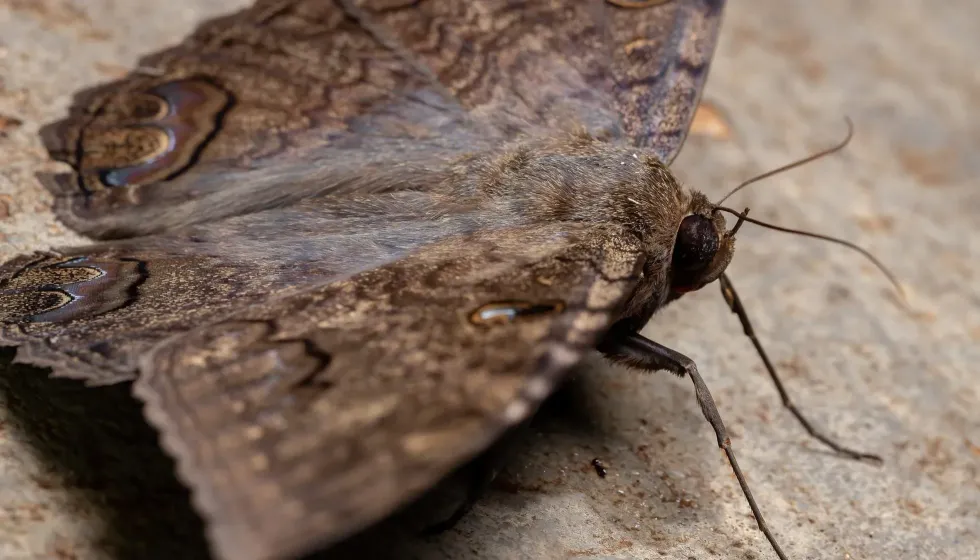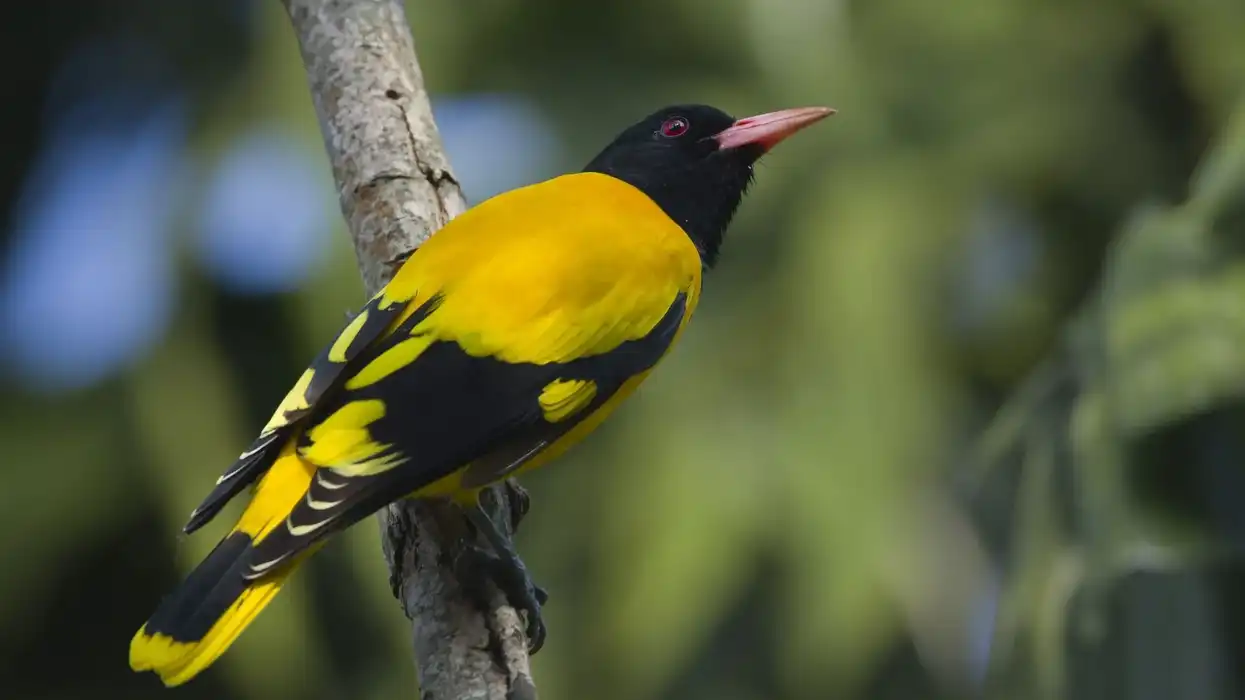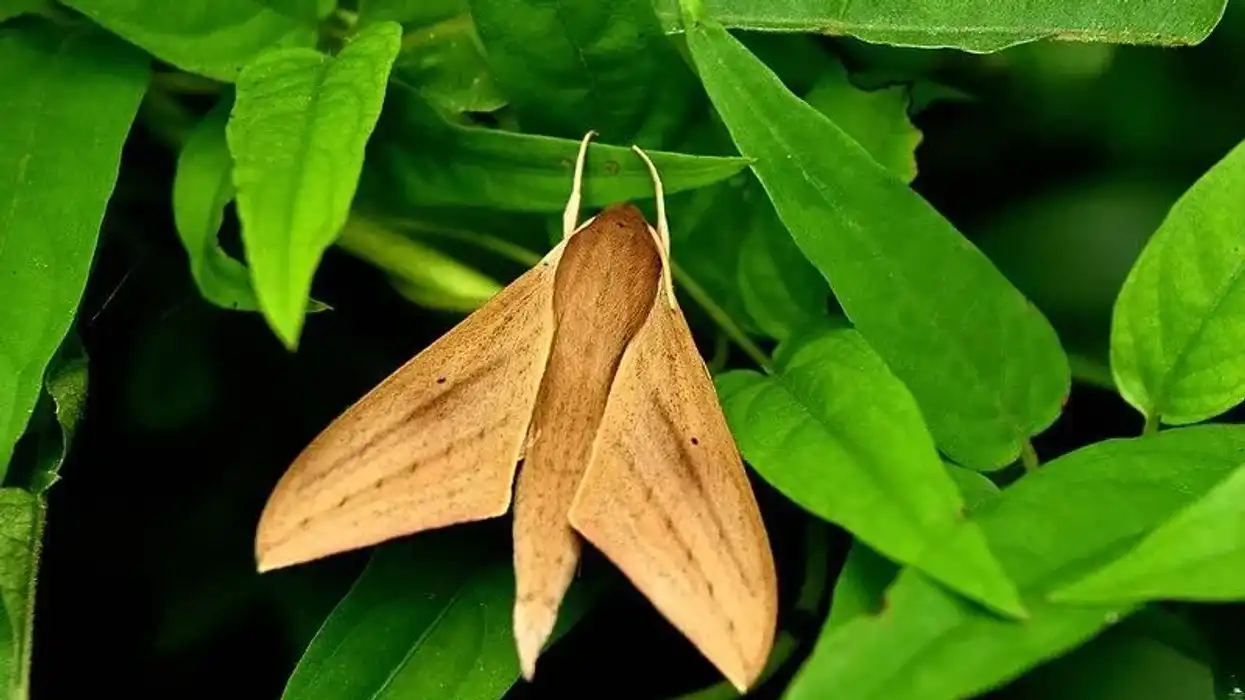The black witch moth is a moth from the Erebidae family. These moths are bat-like animals usually found in North America, parts of Mexico, Texas, Florida, California, and many south and tropical regions.
This black moth migrates during different seasons. They are known to the largest moth in North America and are a migratory species.
Bats are the primary black witch moth predator, but they also sometimes fall prey to small rodents. They love to eat overripe and sweet fruit like bananas, legumes, and acacia leaves.
Black witch moths are nocturnal, so they are most active during the night, and the average black witch moth size of their wings (their wing span) is 4.7-6.6 in (12-17 cm). Their wings have an attractive unique pattern, and these moths have a small head and a big nose.
They are usually dark brown in color. Females are bigger than males and have white stripes on their bodies.
Aside from being interesting animals, there is a lot of black witch moth superstition and black witch moth symbolism to explore too, so read on to find out more! If you like this article about these black witches, you can also give a read to our facts about the puss moth and the gypsy moth.
Black Witch Moth Interesting Facts
What type of animal is a black witch moth?
The black witch moth belongs to the moth category, from the kingdom Animalia. They are active during the night and these black moths are also known as 'black witches' in North America.
What class of animal does a black witch moth belong to?
Black witches are the largest moths from the Insecta class. This black moth looks a little like a bat, and in Jamaica, it is called a 'duppy bat'.
How many black witch moths are there in the world?
There is no exact number given for the population status of the black witch moth (Ascalapha odorata). They are found in abundance in North America and in parts of Mexico, Texas, and Florida, and hence, not rare.
Where does a black witch moth live?
The black witch moth (Ascalapha odorata) can usually be found in northern parts of Mexico on grass plains and farms. They live in host plants to keep safe from their predators and find easy food for survival.
What is a black witch moth's habitat?
These moths love migrating to parts of Mexico during winter or during their breeding season. Black witch moths are a very common species in northern American regions too. In Mexico, they call this moth the 'butterfly of death'. They are found in farms, among grass, trees, plains, and host plants where they can get food easily.
Who do black witch moths live with?
These black moths live alone on their host plants. They are solitary and only sometimes pair up and fly together.
How long does a black witch moth live?
A giant black witch moth usually lives for three to four weeks.
How do they reproduce?
Like other butterflies and moths, a female witch moth lays eggs (usually on the host plants). The eggs hatch, and eventually, caterpillars emerge out of them.
After that, these caterpillars feed off the host plant (fruits and seeds) and even eat small animals. They sometimes eat the leaves of the plant too. They then spin cocoons and eventually become an adult black witch moth, and so the cycle continues.
What is their conservation status?
These moths fall under the category of Least Concern. You need not worry about their conservation as they are not facing any major threats.
Black Witch Moth Fun Facts
What do black witch moths look like?
They are dark brown to black in color, with huge wings which help them fly and attract partners. Each wing is dark brown with a unique design.
A typical black witch moth head is usually smaller than those of other moths. Females are larger than males and have white stripes on their bodies. They are nocturnal moths who are generally active at night.
How cute are they?
These moths are linked to different superstitions in different places. Despite their sometimes negative connotations, their small head and large wings make it look attractive and appealing to many.
How do they communicate?
These moths communicate via their ears. They initially developed these ears to protect themselves from predators and they can also emit faint sounds to communicate with each other.
How big is a black witch moth?
The wings of a black witch moth are about 4.7-6.6 in (12-17 cm) long. They are comparatively bigger than other moth and butterfly species.
How fast can black witch moths fly?
Black witch moths fly at a medium speed and are sometimes even confused with bats due to their appearance. They are nocturnal animals that are active at night.
How much does a black witch moth weigh?
The weight of an average black witch moth is 0.6 oz (18 g).
What are their male and female names of the species?
There is no specific name given to males and females. Males are simply known as male black witch moths, and females are known as female black witch moths. One difference between a male black witch moth and a female black witch moth is that females usually have a larger wingspan than males.
What would you call a baby black witch moth?
Baby black moths are called black witch moth larvae.
What do they eat?
A black witch moth caterpillar will eat legumes, acacia leaves, and mesquite. Black witch moths usually prey on overripe fruit like bananas at night.
Are they dangerous?
They are not dangerous. They are harmless, despite how scary they can look sometimes!
Would they make a good pet?
These moths have several superstitions pinned to their name, and hence not many people choose to keep them as pets.
Did you know...
Have you watched the movie 'Silence Of The Lambs'? The serial killer in the film puts a black witch moth cocoon in the mouths of each of his victims to send out hidden messages of transformation. This film made these moths famous. but arguably for the wrong reasons!
The black witch moth: pest or not? Scientists have shown that tese moths are not pests, and they are actually harmless.
These moths were discovered by Carl von Linné, who also gave them their scientific name.
What does it mean when you see a black witch moth?
There are many black witch moth superstitions out there.
One of them is that if this black moth visits all four corners of a house, it means that someone in the house will die.
In Hawaii, if someone's loved one has died, then there is a specific black witch moth spiritual meaning, where they are believed to be the personification of the person's soul returning to say goodbye.
In the Bahamas, these moths are known as 'money moths', and in Texas, if black witches come and land on your door, then it is believed that there is a chance that you might win the lottery.
There are so many superstitions, do you think the black witch moth omen is a good or bad one?
What do they call black witch moths in Mexico?
In Mexico, these moths are called 'mariposa de la muerte', meaning the 'butterfly of death'.
Here at Kidadl, we have carefully created lots of interesting family-friendly animal facts for everyone to discover! Learn more about some other arthropods, including the American dagger moth or the Rosy Maple moth.
You can even occupy yourself at home by drawing one of our black witch moth coloring pages.










